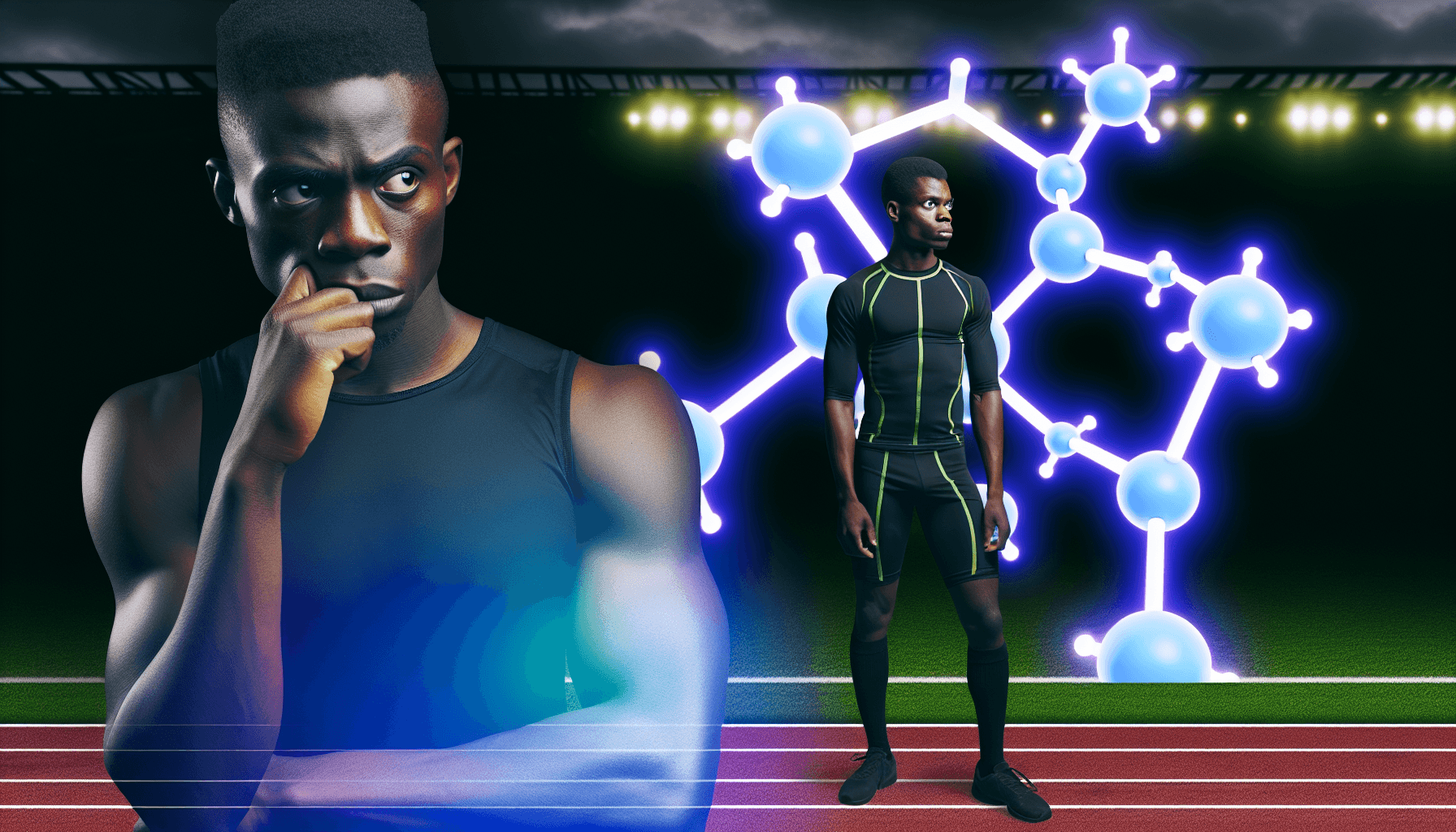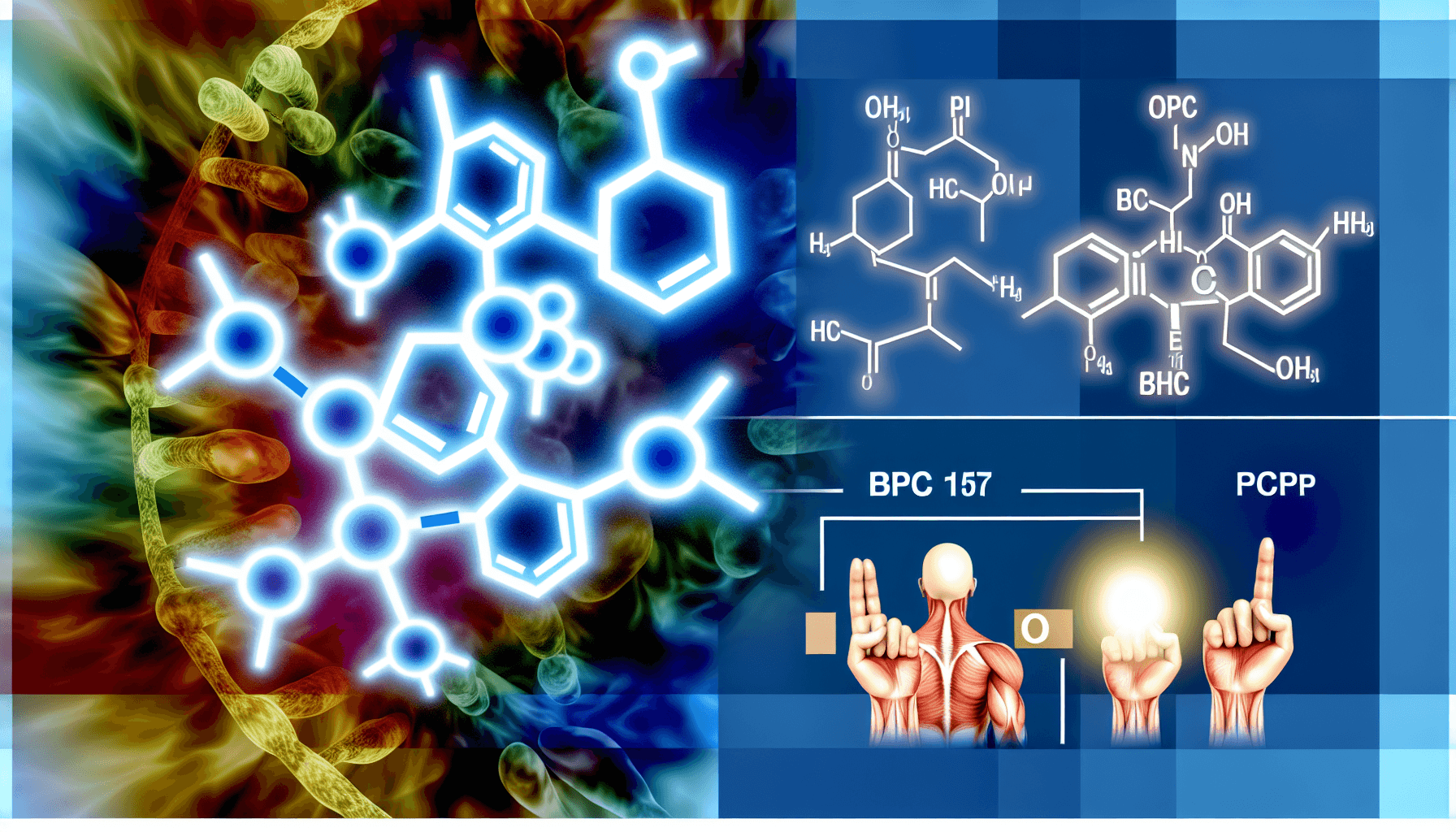BPC-157, a short peptide derived from naturally occurring proteins in gastric juices, has sparked growing interest within the biomedical research community. Distinguished by its theoretical promise in regenerative biology and tissue repair, this pentadecapeptide is being explored for its potential applications in various fields. Although much of its mechanisms remain hypothetical, early investigations have opened new discussions about its implications for tissue integrity, cellular signaling, and vascular stabilization.
Source: PubMedView Source
Hypothesized Mechanisms of Action
The functional properties of BPC-157 are tied to its possible interactions with key pathways responsible for repair processes. Preliminary research indicates the peptide may modulate:
- Growth Factors: Theories propose that BPC-157 might affect molecules like VEGF (vascular endothelial growth factor), vital in tissue repair and angiogenesis.
- Cellular Signaling Pathways: Through interactions possibly involving protein kinase and nitric oxide production, it is suggested that BPC-157 could support vascular stability and cellular communication.
- Extracellular Matrix Proteins: Understanding how this peptide might enhance tissue remodeling, including collagen deposition and fibroblast activity, is a growing area of scientific interest.
Although promising, these models remain speculative and underline the necessity of further validation through rigorous laboratory and clinical studies.
Applications in Regenerative and Tissue Research
Musculoskeletal Repair
One of the focal points in BPC-157 research is its theorized potential in musculoskeletal health. For tendons, cartilage, and ligaments—structures naturally limited in self-repair—BPC-157 might play a role in:
- Fibroblast Activity: Supporting cellular growth and extracellular matrix organization.
- Collagen Expression: Enhancing the structural integrity of musculoskeletal tissues.
From experimental animal models, researchers have suggested the peptide may improve tendon recovery rates or mitigate injuries' long-term effects.
Angiogenesis and Vascular Health
Tissue recovery often parallels adequate blood supply. Hypotheses have emerged hinting that BPC-157 may:
- Influence endothelial cell functions critical for capillary formation.
- Enhance vascular signaling by stabilizing nitric oxide pathways.
This makes the peptide particularly intriguing in the study of microvascular stability and tissue nutrition, especially when addressing chronic injuries or systemic disorders.
Cellular Homeostasis and Neurobiological Speculations
Another speculative domain for BPC-157 is its potential impact on cellular homeostasis. This spans diverse possibilities, such as influencing oxidative stress responses, supporting mitochondrial integrity, and triggering cytoprotective behaviors. Additionally, researchers are exploring:
- Neurotrophic Pathways: Could BPC-157 enhance brain health, synaptic plasticity, or repair following neurological injuries?
- Microcirculation in Neural Tissues: The peptide's theorized influence on brain vascularization might be a key consideration for conditions tied to cellular oxygen or nutrient deprivation.
Challenges and Future Considerations
Despite its allure as a potential therapeutic tool, there are significant challenges in BPC-157 research. Limitations in experimental reproducibility, restricted human trials, and the absence of a fully mapped mechanism mean its utility remains largely speculative.
Research Innovations on the Horizon
To move theory into practice, the following areas must be addressed:
- Development of concrete animal-to-human translation protocols.
- Studies exploring long-term safety profiles and dosage thresholds.
- Investigations linking molecular observations with physiological outcomes across tissues.
The Role of Interdisciplinary Collaboration
Emerging technologies in bioengineering, alongside advanced imaging techniques, may enable nuanced exploration of BPC-157’s potential. Cross-disciplinary studies bridging molecular biology, regenerative medicine, and vascular biology could uncover the peptide’s precise role in cellular integrity.
Conclusion
BPC-157 serves as a molecular narrative of what may be possible in peptide therapeutics, particularly regarding regeneration and healing. While much remains speculative, its ability to stir academic discourse underscores its importance as a research priority. Future exploration will determine whether BPC-157 can transition from laboratory fascination to a practical treatment, further integrating it into our scientific understanding of biological repair mechanisms.
If you're interested in exploring the original studies regarding BPC-157's implications, visit here.
References
- Gwyer, D., Wragg, N. M., & Wilson, S. L. (2020). Gastric pentadecapeptide body protection compound BPC 157 and its role in accelerating musculoskeletal soft tissue healing. Cell and Tissue Research, 380(3), 453–464.
- Pevec, D., & Staresinic, M. (2018). The impact of BPC 157 on muscle healing impaired by systemic corticosteroid implication. Journal of Applied Biomedicine, 16(3), 229–233.
- Sikiric, P., Seiwerth, S., & Rucman, R. (2011). Stable gastric pentadecapeptide BPC 157: Novel therapy in gastrointestinal tract. Current Pharmaceutical Design, 17(16), 1612–1632.
- Boros, K., & Varga, G. (2020). The effect of BPC 157 on chronic stress-induced behavioral and gastrointestinal dysfunction in rats. Journal of Physiology and Pharmacology, 71(2), 241–248.
- Tkalcevic, V. I., & Cicin-Sain, L. (2007). The impact of pentadecapeptide BPC 157 on healing of segmental bone defect in rabbits. European Journal of Pharmacology, 577(1-3), 170–179.



